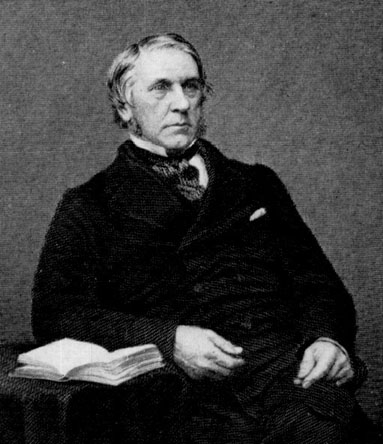London and South East Railway
The mid to late 1800's saw a boom in railways with more many more railways proposed than actually were developed.
One of these was the London and South Essex Railway which in 1845 was planned to run from Stepney to Burnham on Crouch.
The project was costed at £900,000 which was to be raised by 15,000 shares at £50 each.
 Joseph Locke
Joseph Locke
The respected Joseph Locke was appointed and the engineer . Locke had a series of triumphs behind him including a collaboration with George Stephenson on the pioneering Liverpool and Manchester Railway.
William Tite was appointed as surveyor. Tite had just supervised the renovation of the Royal Exchange which opened in 1844 to great acclaim.
Shares in the project sold well following the appointment of Locke and Tite coupled with a very optimistic projection.
The route of the line was to be
Stepney
Barking
Ockendon
Tilbury
Gravesend( By steam ferry from Tilbury)
Thames Haven
Rochford
Southend
Burnham on Crouch
The terminus at Stepney was on the existing Blackwall railway and so would link into the London railway system.
The prospectus extolled the virtues of the line.
By the proposed lines Gravesend will be reached from the City within less than an hour and Southend within an hours and twenty minutes. The present distance of Southend by road from Whitechapel Church is forty two miles, and the tediousness of both the land journey and the river travelling, has hitherto been felt as a serious drawback to the peculiar advantages of its position. Southend will now be known as not only the nearest watering place to the metropolis but as one more easily and economically accessible than any other.
The provisional directors propose to carry the line beyond Southend to the River Crouch, from a conviction that it is important to the interests of the company and the public that the railway should be connected to the existing natural harbour for colliers, fishing smacks and other vessels in the South Eastern extremity of the county of Essex. The River Crouch possesses considerable width and depth of water and excellent anchorage. Near the town of Burnham ships of great burden ride at anchor in perfect safety and at the lowest tides find sufficient water at the entrance to the river. By the use of this harbour in connection with the railway shipping from the Tyne will shorten their voyage by more than sixty miles, avoiding the payment of various heavy dues connected with the Port of London and escape the serious loss arising from detention in the pool.
It is obvious that the saving thus effected in distance,time and money will be of great importance to ship owners, when the objects of their trade can be accomplished by stopping in the Crouch instead of proceeding up the Thames: and communications with many of the most influential coal and ship owners in the north have convinced the provisional directors that a large proportion of the coal now supplied to the pool will be sent from Burnham Harbour.
The trade in fish from this port, and the ports at Leigh,Rochford and Southend is considerable but will be largely increased by the proposed railway.
Over 64000 applications were made for the shares which meant that the required capital was obtained with a deposit of �2.15 taken from each new shareholder.
The next step was to arrange an Act of Parliament to allow for the compulsory purchase of the land required and operation of the line.
Sadly for the new company Parliament was faced by applications for over 1000 companies many of which were not viable but still raised money from creditors.
Not only was much Parliamentary time taken up will Bills but many people were losing money.
All Bills before parliament including the London and South Essex Railway was stopped and a new law enacted that gave shareholders the chance top wind up the company of they felt that the scheme was not viable.
The shareholders of South Essex called an AGM which was held in May 1846.
The Guardian reports that A stormy meeting scriptholders of this company terminated in a poll being taken which determined that the scheme is to be wound up
The company was wound up and �1. 13 shillings and 3 pence were eventually returned to all shareholders leaving them with a loss of just over �1 on their deposit but perhaps the biggest loss was to Burnham on Crouch who were not to get their railway line until 1889 by which time other railway lines were operating in both fish and coal transfers to London.
Who knows what Burnham and the Dengie 100 may have looked like if the railway line had gone ahead.

